Part 1 – Calculating the Free Cash Flow to Firm (FCFF)
Steps:
- To calculate Free Cash Flow to Firm (FCFF), we have collected an Income Statement of Profit & Loss like the image below.
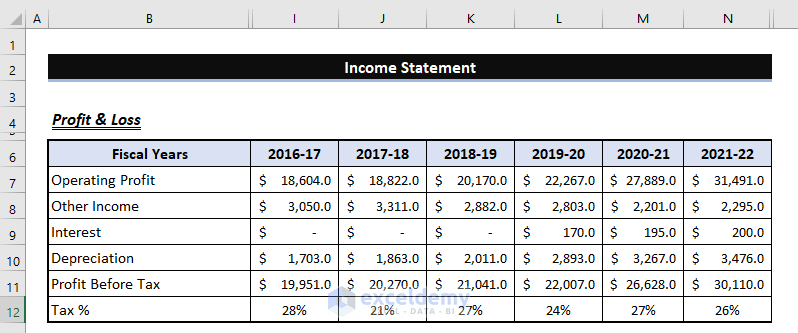
- We also have an Income Statement of Cash Flow, as shown in the image below, to compute the Free Cash Flow to Firm (FCFF).
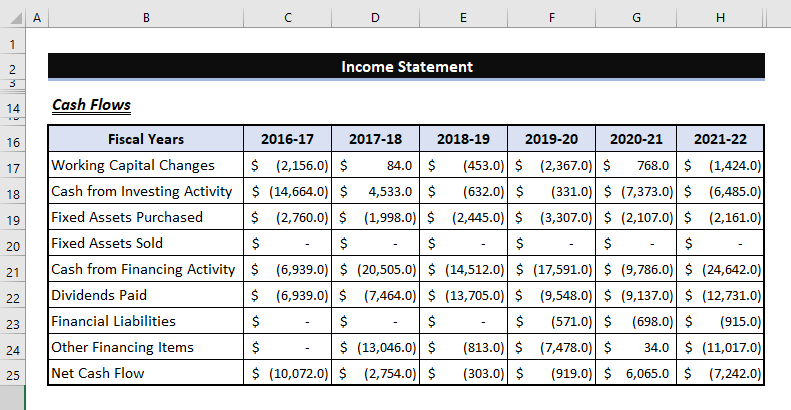
- We will calculate all necessary items needed for FCFF in the second sheet of our Excel Workbook titled Free Cash Flow to Firm.
- Earnings Before Interest, Taxes, Depreciation, and Amortization, or EBITDA is an Operating Profit that is in the C7 of the first sheet of the Excel file. So, we need the C7 of the first sheet in the second sheet of our Excel Workbook.
- Enter “=” in C5 of the second sheet and select the C7 cell of the first sheet of the Excel file, then press Enter:
='Income Statement'!$C$7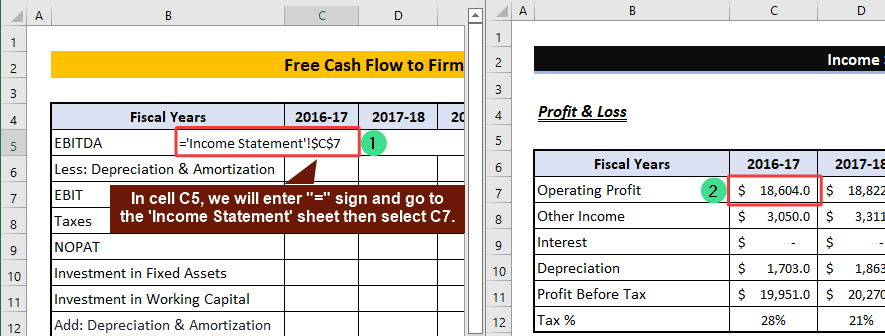
- Complete the series by dragging the fill handle to the right.
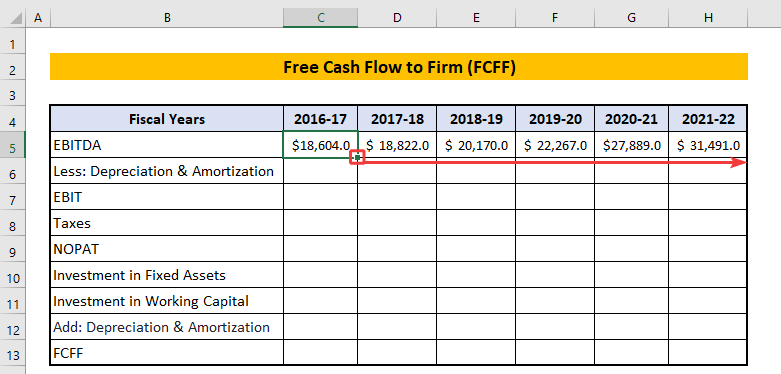
- In C6 of the second sheet, use the following:
='Income Statement'!C10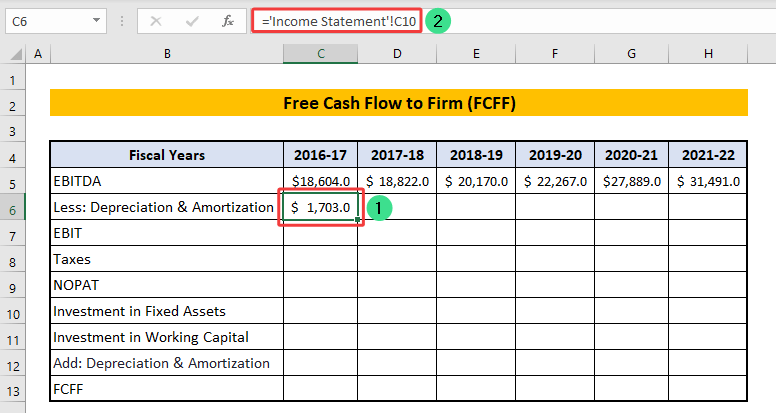
- We have entered D&A for Fiscal Years 2016-17 and completed the series by autofilling to the right.
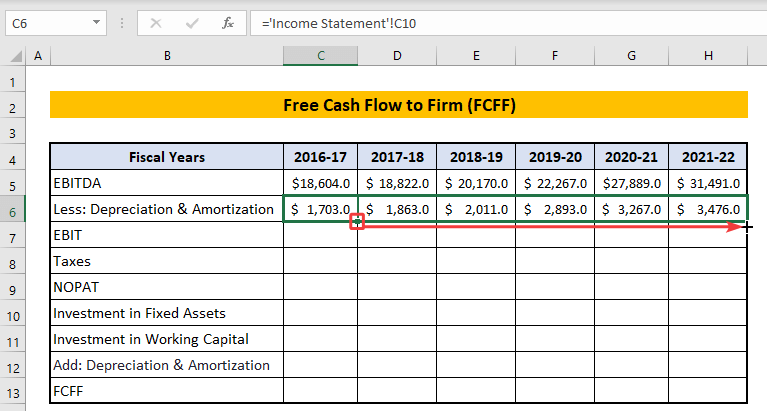
- Calculate EBIT by entering the following formula:
=C5-C6EBIT= EBITDA – Depreciation & Amortization
C5= EBITDA
C6= D&A
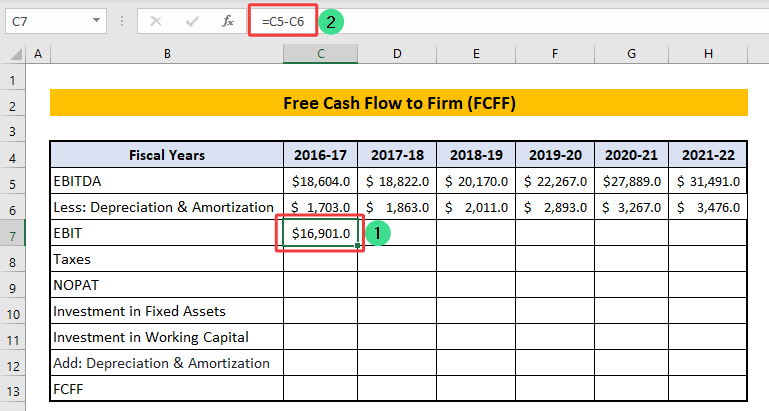
- Drag the fill handle to the right.
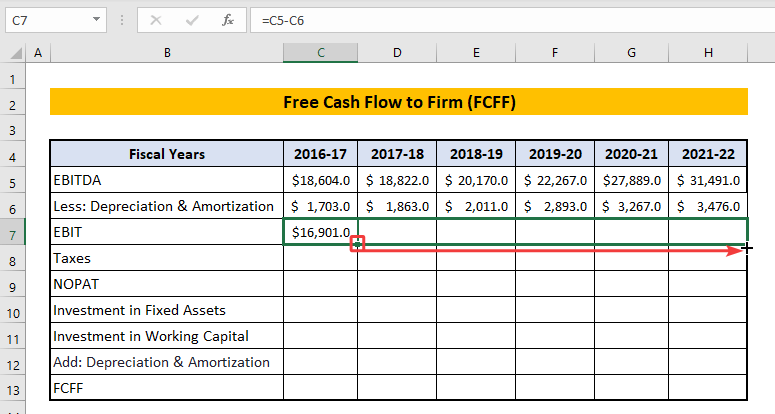
- To calculate Taxes in the cell C8, use the following:
=C7*'Income Statement'!C12Taxes= EBIT x Tax rate
C7= EBIT
‘Income Statement’!C12 = C12 in the Income Statement sheet.
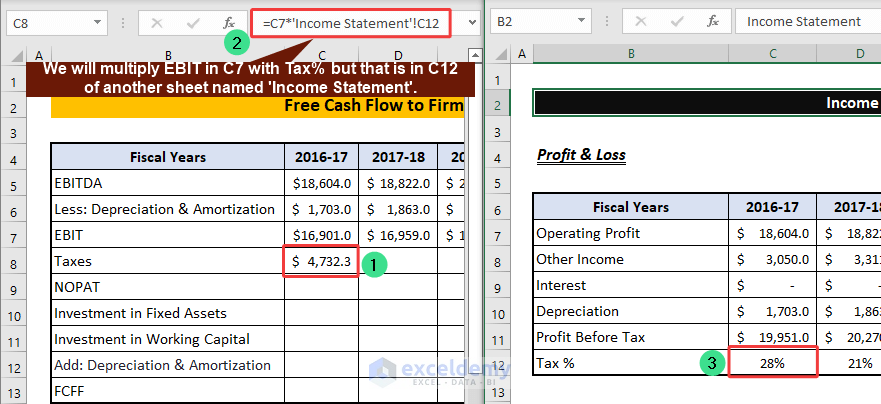
- Drag the fill handle to the right.
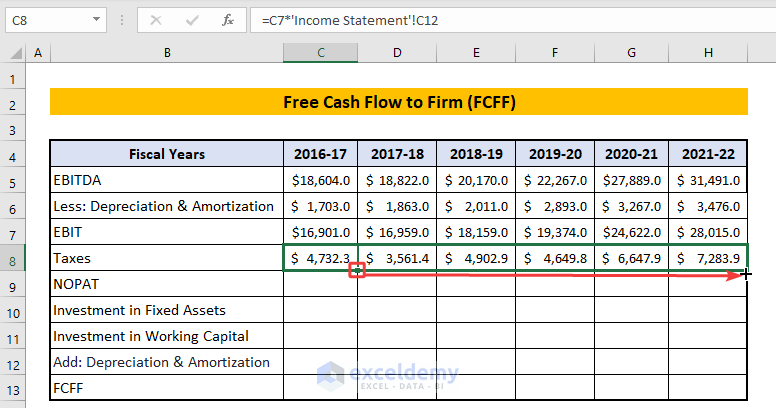
- In cell C9, enter the following formula:
=C7-C8NOPAT means Net Operating Profit After Tax
NOPAT=EBIT – Taxes
C7= EBIT
C8= Taxes
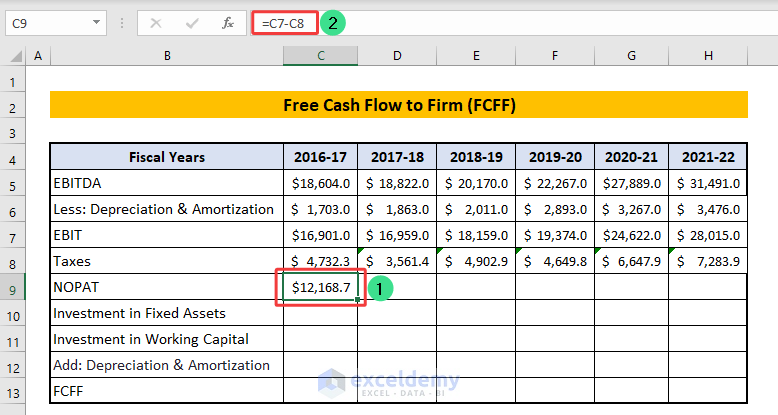
- Drag the fill handle to the right.
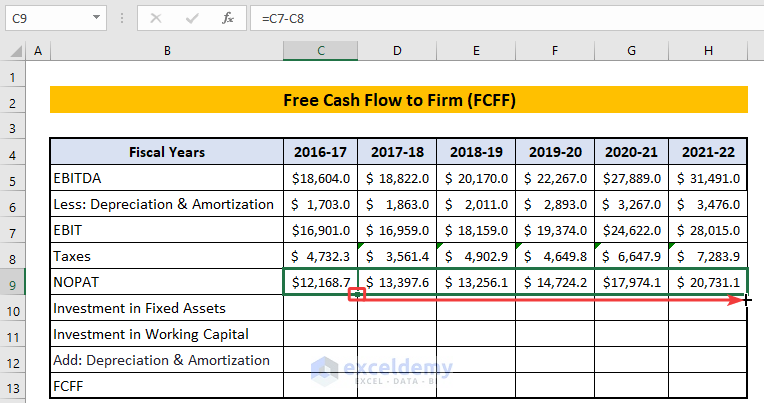
- In C10, use the following formula:
='Income Statement'!C19+'Income Statement'!C20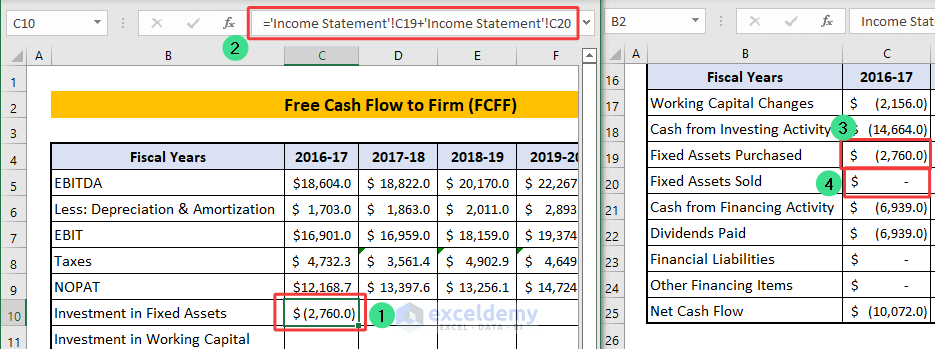
- Drag the fill handle to the right.
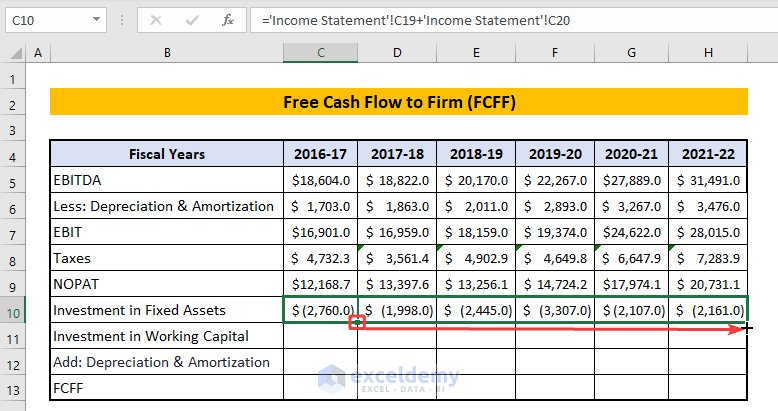
- Investment in Working Capital in cell C11 of the second sheet denotes Working Capital Changes in cell C17 of the first sheet. The formula in C11 needs to be the following:
='Income Statement'!C17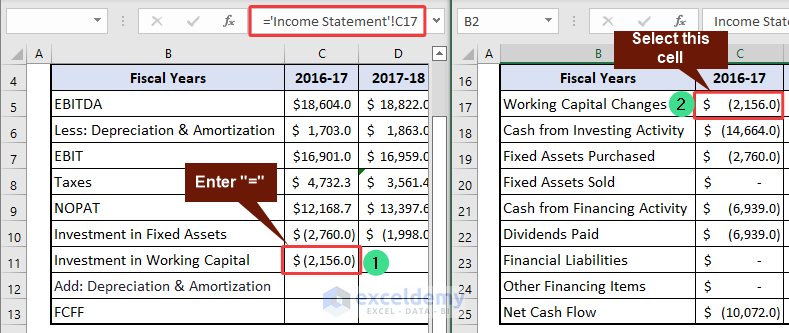
- Drag the fill handle to the right.
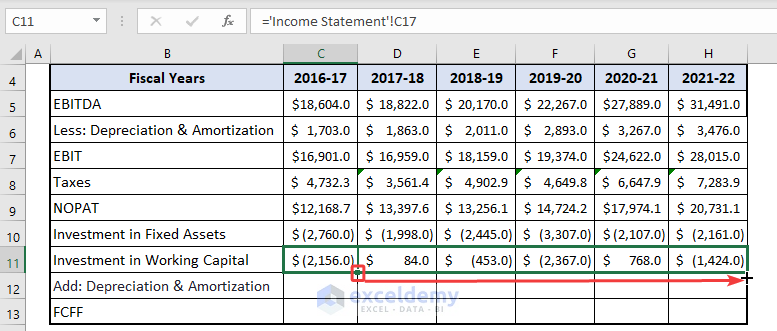
- Enter the reference to the C6 cell in the C12.
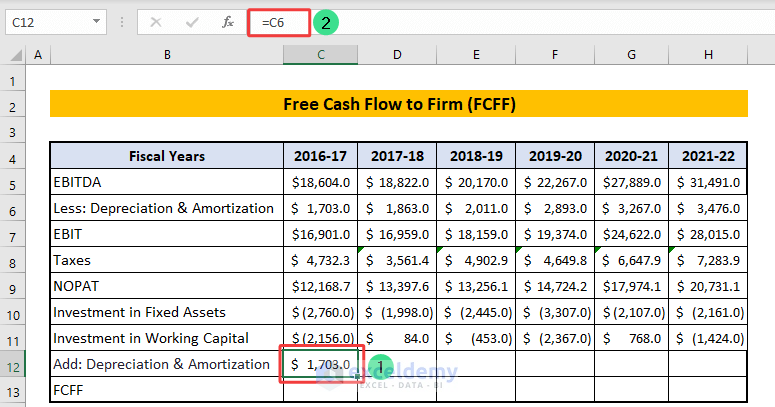
- Drag the fill handle to the right to complete the series.
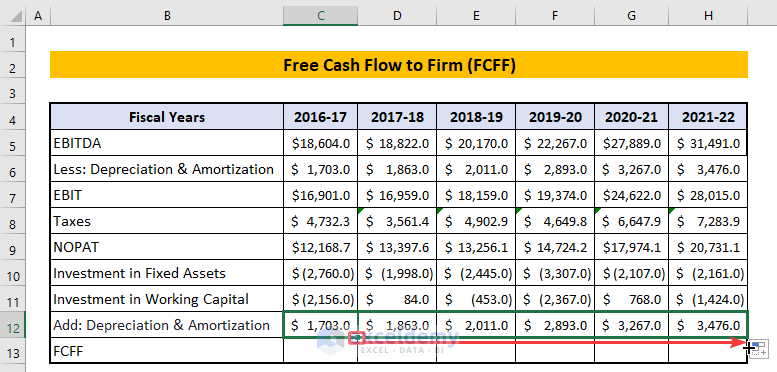
- In cell C13, enter the following formula to find FCFF:
=C9+C10+C11+C12Free Cash Flow to Firm (FCFF) = NOPAT (Net Operating Profit After Tax ) – Investment in Fixed Asset – Investment in Working Capital + D&A
C9= NOPAT
C10= Investment in Fixed Asset
C11= Investment in Working Capital
C12= D&A
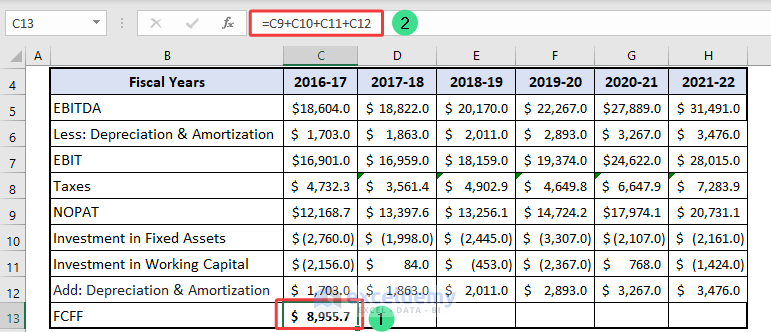
- Drag the fill handle to the right to find the FCFF of each Fiscal Year.
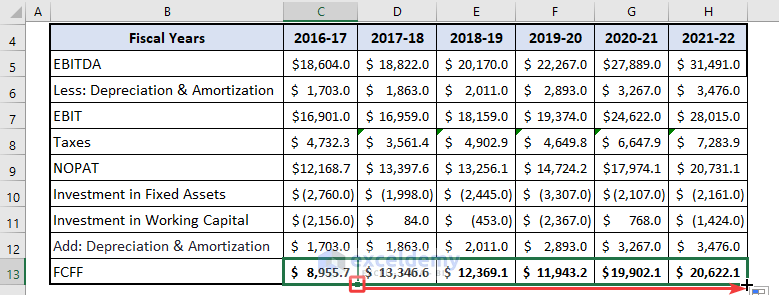
Read More: How to Calculate Annual Cash Flow in Excel
Part 2 – Calculating the Free Cash Flow to Equity (FCFE)
FCFE, or Free Cash Flow to Equity, is the amount of cash available to the company’s owner after debt, investment, and interest payments have been made.
Steps:
- In cell C18, insert the following:
=SUM('Income Statement'!C22:C24)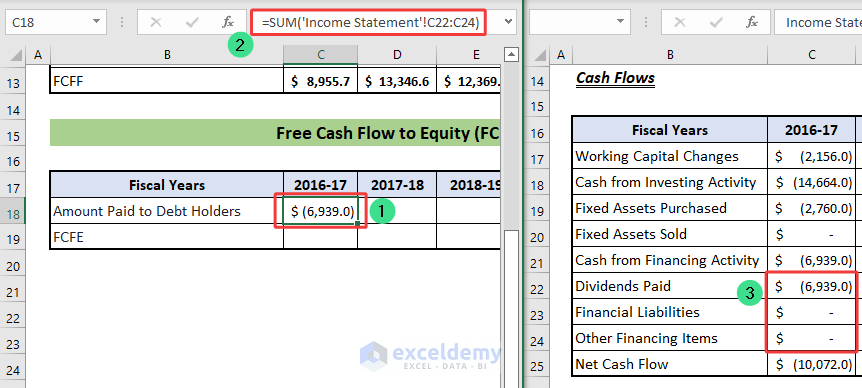
- Drag the fill handle to the right.
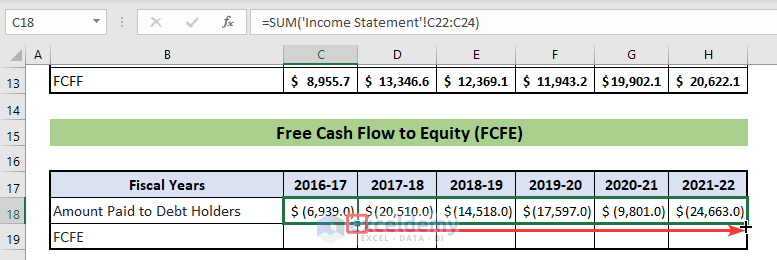
- To calculate FCFE in C19, enter the following formula:
=C13+C18C13= FCFF
C18= Amount Paid to debt Holders
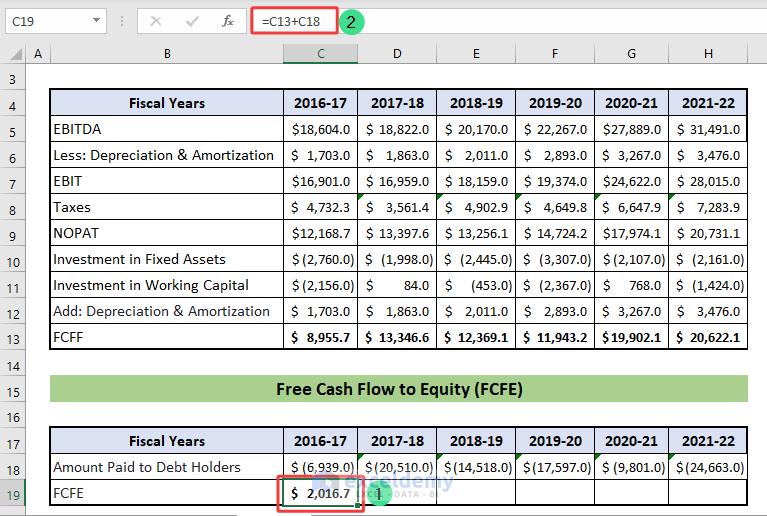
- Drag the fill handle to the right to complete the calculation of FCFE.

Read More: How to Calculate Incremental Cash Flow in Excel
How to Decide If a Free Cash Flow Is “Good”
Since FCF considers variations in working capital, it may give meaningful insights about an enterprise’s worth and the sustainability of its basic trends. Good FCF denotes the ability of a company in the way that it can pay debts, pay dividends, buy its stocks, and speed up a company’s development.
What to Do If Free Cash Flow Is Negative:
The cash a corporation has left over after paying its operational expenditures is tracked by free cash flow. If there is no leftover, then the cash flow is negative. Here are some ways to mitigate that
- Spend less money.
- Regularly examine all expenditure.
- Prepare an emergency fund to cover unforeseen costs.
Limitations of Using Free Cash Flow in Business Plan:
- Low free cash flow does not automatically indicate a failed firm.
- Although much less susceptible to accounting fraud than other estimates, free cash flow is not fully immune.
Download the Practice Workbook
Related Articles
- How to Calculate Discounted Cash Flow in Excel (with Easy Steps)
- How to Forecast Cash Flow in Excel (with Detailed Steps)
- How to Calculate Cumulative Cash Flow in Excel
- How to Draw a Cash Flow Diagram in Excel
- How to Track Cash Flow in Excel
- How to Create a Personal Cash Flow Statement in Excel
- How to Calculate Operating Cash Flow Using Formula in Excel
- How to Calculate Payback Period in Excel
- How to Calculate Payback Period with Uneven Cash Flows
- How to Apply Discounted Cash Flow Formula in Excel
- How to Calculate Operating Cash Flow in Excel
<< Go Back to Excel Cash Flow Formula | Excel Formulas for Finance | Excel for Finance | Learn Excel
Get FREE Advanced Excel Exercises with Solutions!

